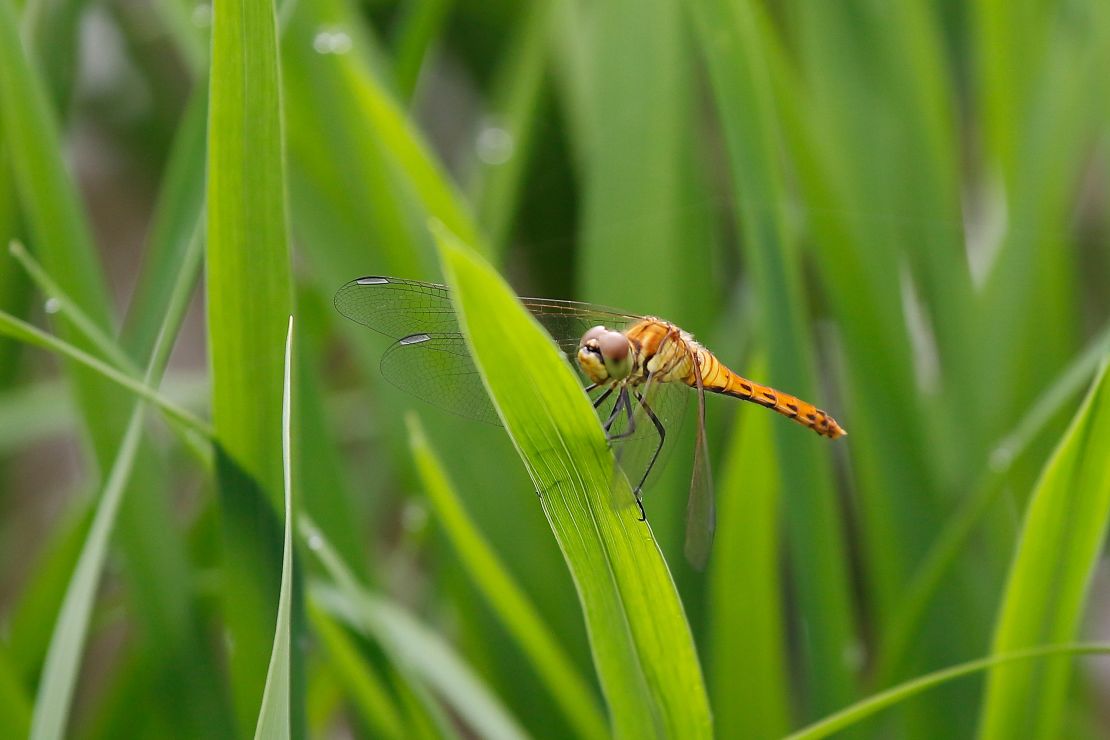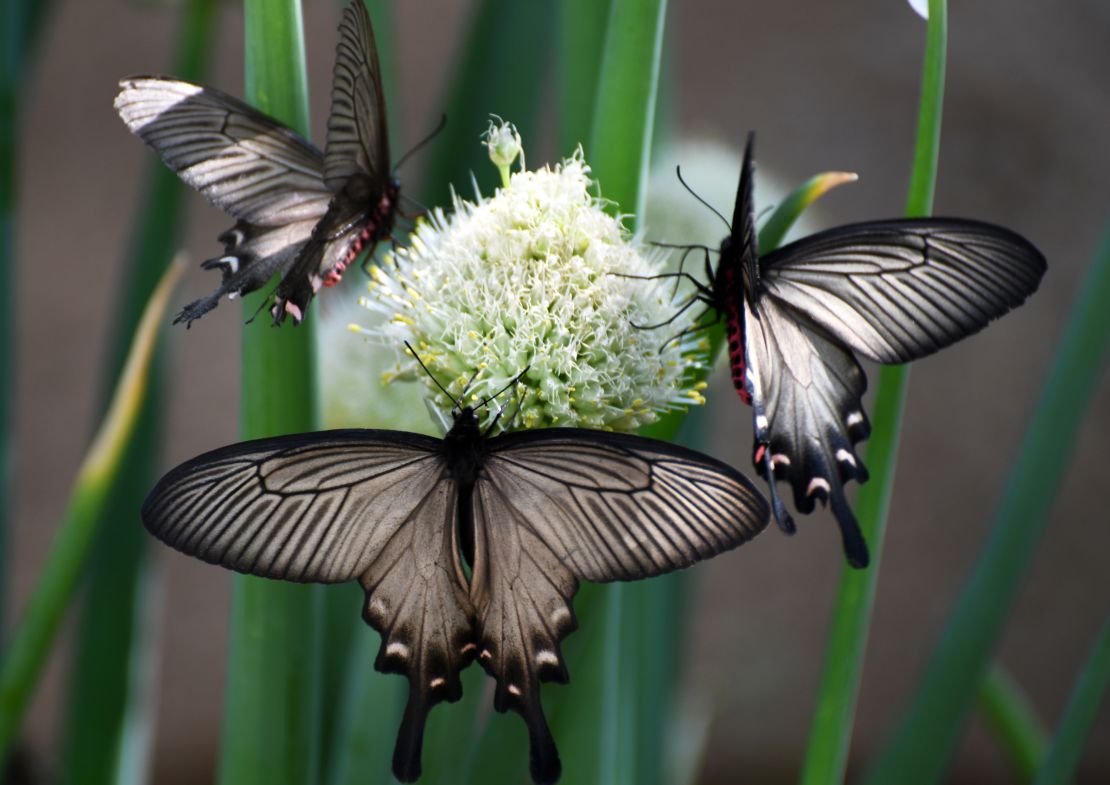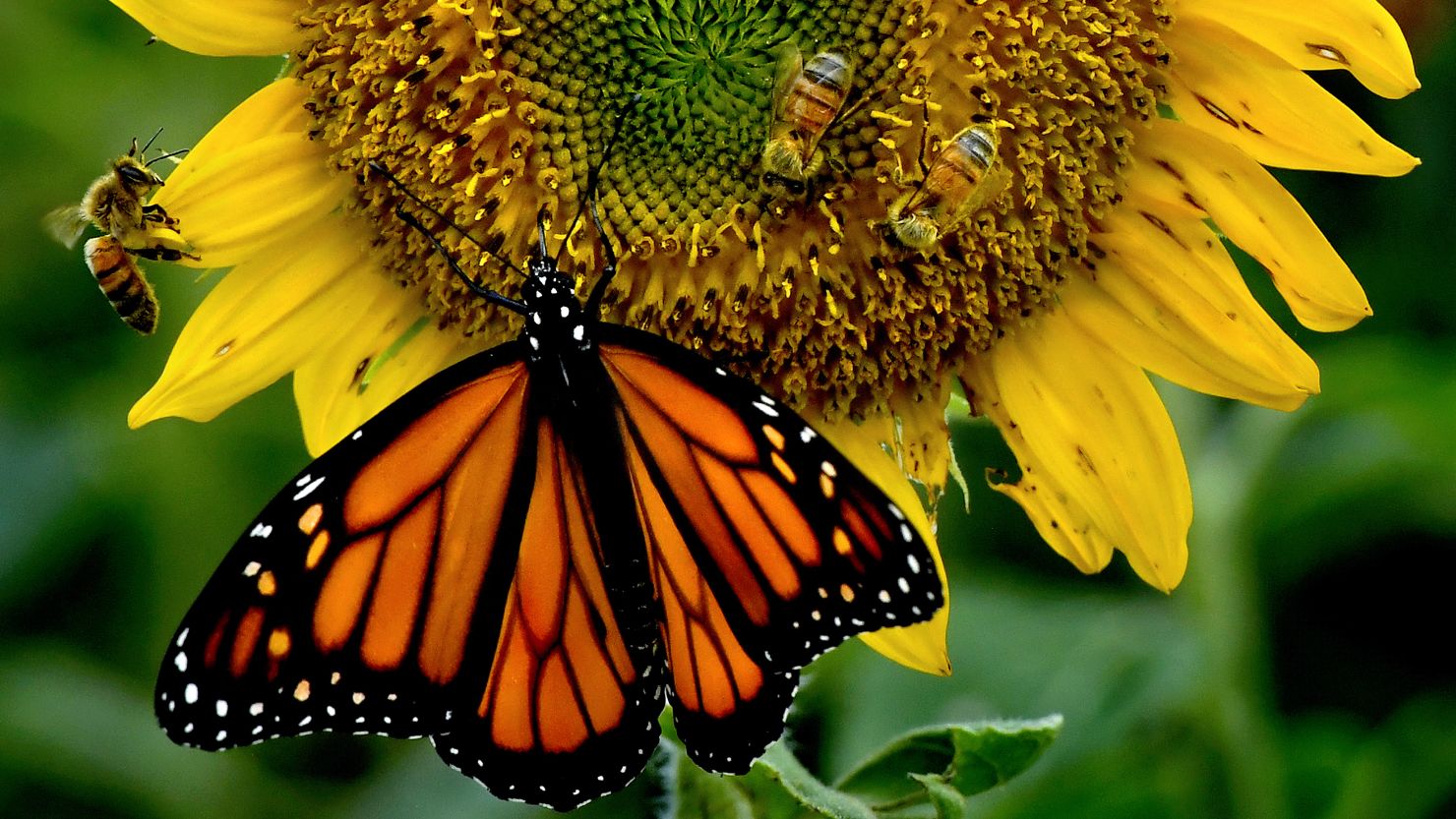Extreme land use combined with warming temperatures are pushing insect ecosystems toward collapse in some parts of the world, scientists reported Wednesday.
The study, published in the journal Nature, identified for the first time a clear and alarming link between the climate crisis and high-intensity agriculture and showed that, in places where those impacts are particularly high, insect abundance has already dropped by nearly 50%, while the number of species has been slashed by 27%.
These findings raise huge concerns, according to Charlotte Outhwaite, the lead author on the study and researcher at the University College London, given the important role of insects in local ecosystems, pollination and food production, and noted that losing insects could threaten human health and food security.
“Three quarters of our crops depend on insect pollinators,” Dave Goulson, a professor of biology at the University of Sussex in the UK, previously told CNN. “Crops will begin to fail. We won’t have things like strawberries.
“We can’t feed 7.5 billion people without insects.”
Outhwaite said their findings “may only represent the tip of the iceberg,” because of the limited amount of evidence in some regions.
“But I think there are also a lot of consequences that we probably don’t really know because obviously there are so many different kinds of insects,” Outhwaite told CNN. “They do so many important things. We just don’t have a strong handle on how much we rely on them for certain situations.”

Tom Oliver, a professor of applied ecology at the University of Reading, said in a statement that scientists don’t yet know when insect populations could reach a point of no return, where their losses would be too great to overcome.
“In terms of a potential tipping point where the loss of insects causes whole ecosystems to collapse, the honest answer is we just don’t know when the point of no return is,” said Oliver, who was not involved in the study. “We know that you can’t just keep losing species without, ultimately, causing a catastrophic outcome.”
He likened the gradual loss to removing rivets from an airplane, which you can’t keep doing “without it eventually falling out of the sky.”
The researchers defined high-intensity agriculture as the kind characterized by the use of chemical pesticides or fertilizers, low crop diversity, large field size or high livestock density, among other things — all of which are relatively common features of modern-day farming.
And, scientists say, extreme land use has a compound effect with the climate crisis. Razing natural habitats for agriculture can dramatically alter the area’s local climate and trigger temperature extremes. Researchers found substantial declines in insect populations in areas of the world that are much warmer, particularly in the tropics, where Outhwaite noted finding alarming reductions in insect biodiversity.

Researchers analyzed data from a 20-year period for more than 6,000 locations and studied nearly 18,000 insect species, including butterflies, moths, dragonflies, grasshoppers and bees.
They concluded that in areas with low-intensity agriculture, less climate warming, and a nearby natural habitat, insects only declined by 7%, compared to the 63% decrease in areas with less natural habitat cover. Many insects rely on plants for shade during sweltering days — the loss of nearby natural habitats could leave them more exposed and vulnerable to warming temperatures. And as climate change advances, scientists say these natural buffers may become less effective.
Outhwaite told CNN there are things we can do at an individual level to help stave off this crisis – planting more native species and wildflowers, reducing pesticides used in gardens and even limiting the frequency of lawn mowing.
“And then, thinking a little bit more broadly about perhaps protecting insects in other areas, it’s probably a good idea to think about where the foods that we are buying are being sourced from,” Outwaite said. “So if they’re being sourced from tropical countries, there’s probably going to be a high impact on biodiversity there.”
She also noted that governments have a large role to play in recognizing the impact of trade and food production, and could try to not source food “from areas which are implementing deforestation.”
“I think people are becoming more aware now that biodiversity and insects in particular are at risk, but we haven’t quite got them into the thoughts and thought processes” that would result in protective action, Outhewaite said.
A recent UN report on adapting to the climate crisis underscored how the world’s ecosystems are very much connected to human systems. And unless the planet slashes heat-trapping emissions, those systems will continue to see major losses in biodiversity — particularly insects.
“Whether these remaining insects can continue to support ecosystem functioning, or whether they will eventually be lost themselves is still an open question,” Oliver said. “Under the precautionary principle, however, it would be best to act now so we don’t ever find out about ecosystem collapse by experiencing it.”
This story has been updated with additional information.




